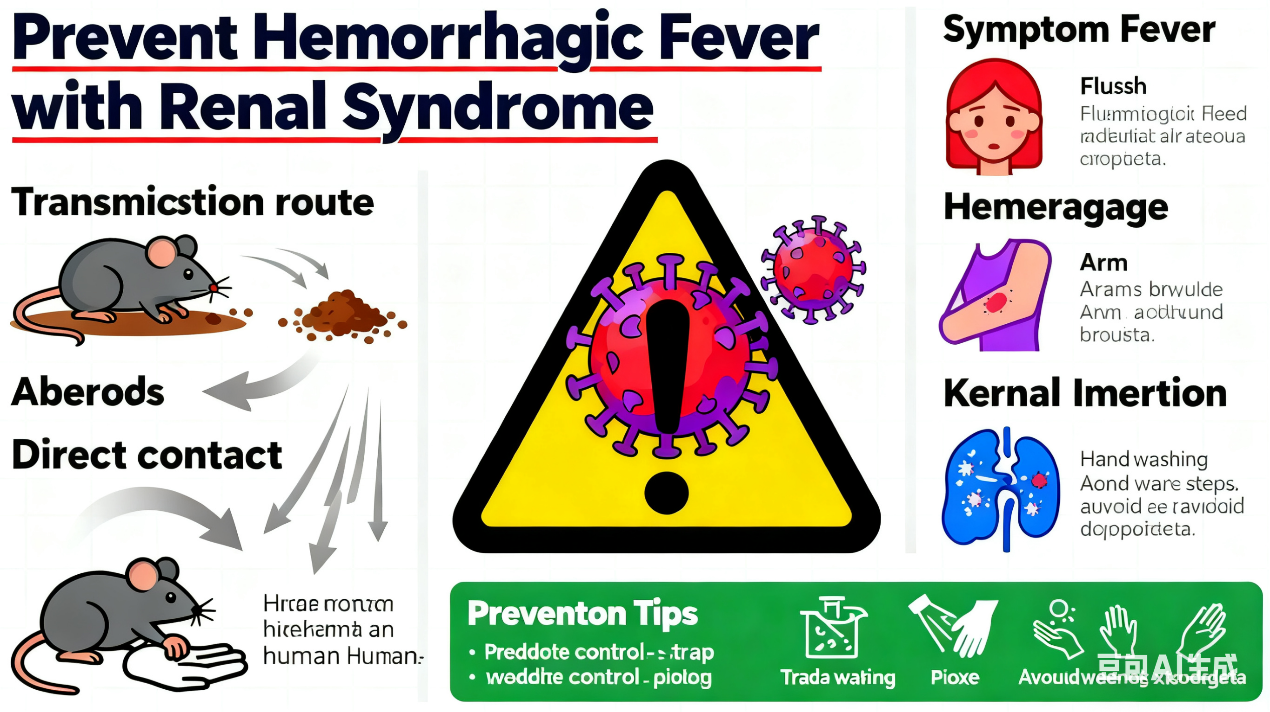Background
Hantaan virus (HV) is the primary pathogen responsible for Hemorrhagic Fever with Renal Syndrome (HFRS). HFRS is a globally distributed zoonotic acute infectious disease characterized by fever, hemorrhage, and renal impairment. The disease has an acute onset, rapid progression, and a high fatality rate, posing a significant threat to public health. Rodents (such as Apodemus agrarius and Rattus norvegicus) are the main reservoirs and vectors of HV. Transmission to humans occurs primarily via aerosolized excreta (urine, feces, saliva), direct contact, or vector bites. HFRS can occur throughout the year, and the general population is susceptible. According to WHO statistics, 32 countries worldwide have reported HV outbreaks, with particularly high prevalence in East Asia, Europe, and the Balkans.
Antibody Markers Post HV Infection
Following HV infection, the human immune system produces specific antibodies, primarily HV-IgM and HV-IgG.
● HV-IgM antibodies: Serve as a serological marker of early infection, typically appearing within days of symptom onset, and are crucial for acute-phase diagnosis.
● HV-IgG antibodies: Emerge later and may persist for life, indicating past infection or convalescence. A four-fold or greater increase in HV-IgG antibody titer between acute and convalescent serum samples is also diagnostic for acute infection.
Common HV Diagnostic Methods
Current laboratory methods for HV detection include virus isolation, PCR, serological ELISA, and colloidal gold immunoassays.
● Virus culture and PCR offer high specificity but are time-consuming, technically demanding, and require advanced laboratory facilities, limiting their widespread use.
● Micro-immunofluorescence (MIF) offers good accuracy but requires a fluorescence microscope and expert interpretation, restricting routine application.
● ELISA and colloidal gold assays are widely adopted in clinical settings due to their simplicity, speed, high sensitivity and specificity, and ease of sample collection (serum/plasma).
Product Performance
Beier Bio’s HV-IgM/IgG (ELISA) Assay Features
● Sample Type: Serum, plasma
● Sample Dilution: Both IgM and IgG assays use original well sampling with a 1:11 dilution (100µl sample diluent + 10µl sample), streamlining workflow and reducing operator workload
● Reagent Ready-to-Use: All reagents are ready except wash buffer (20× concentrated). Color-coded for easy identification
● Incubation Procedure: 30 min / 30 min / 15 min; fully automatable
● Detection Wavelength: 450 nm with 630 nm reference
● Coated Strips: 96 or 48 breakable wells, each with a printed product code for traceability and convenience
Beier Bio’s HV-IgM/IgG (Colloidal Gold) Assay Features
● Sample Type: Serum
● Detection Time: Results within 15 minutes; no additional equipment needed; ideal for rapid screening in outpatient, emergency, and scattered patient settings
● Procedure: Add 10µl sample to the test card sample well using a dropper; interpret results within 15–20 minutes
Clinical Performance of HV-IgM (ELISA), HV-IgG (ELISA), and HV-IgM/IgG (Colloidal Gold)
| Product Name | HV-IgM (ELISA) | HV-IgG (ELISA) |
HV-IgM (Colloidal Gold) |
HV-IgG (Colloidal Gold) |
| Clinical Sensitivity |
99.1% 354/357 |
99.0% 312/315 |
98.0% 350/357 |
99.1% 354/357 |
| Clinical Specificity |
100% 700/700 |
100% 700/700 |
100% 700/700 |
99.7% 698/700 |
Post time: Nov-11-2025

